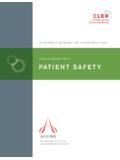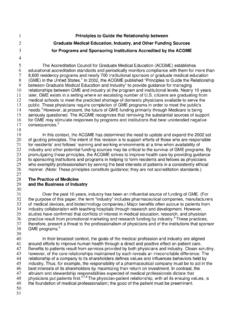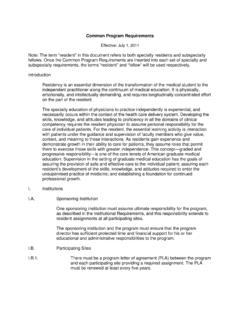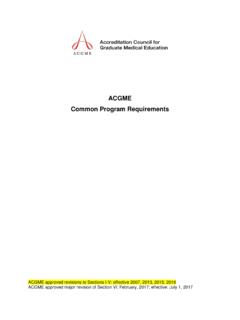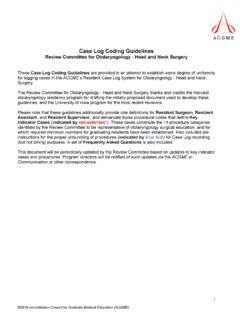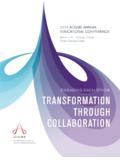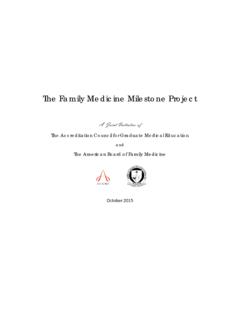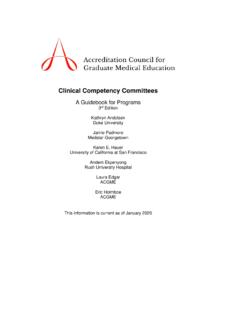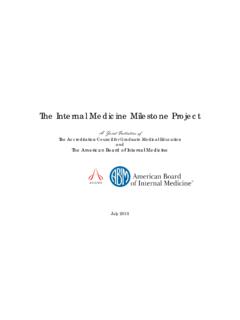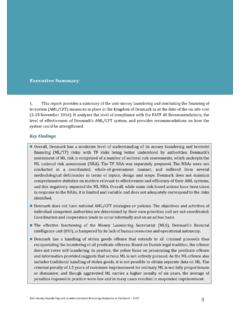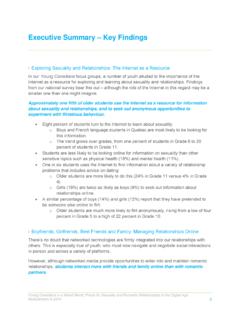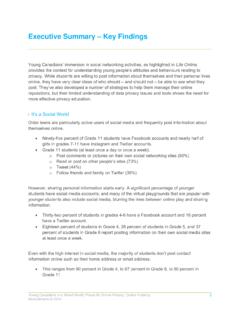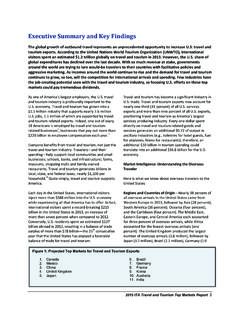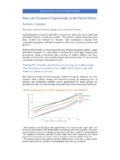Transcription of CLER National Report of Findings 2016 Executive Summary
1 CLER National Report of Findings 2016 Executive Summary 1 2 CLER National Report of Findings 2016 Executive SummaryThe collective observations from this first set of Clinical Learning Environment Review (CLER) site visits portray a community of teaching hospitals, medical centers, and ambulatory care sites that has great capacity to shape the quality of the emerging physician workforce and drive improvements in patient National Report of Findings 2016 Executive Summary 3 IntroductionThe acgme s mission is to improve health care and population health by assessing and advancing the quality of resident physicians education through accreditation.
2 Over the past few years it has become readily apparent that the clinical setting in which residents and fellows learn directly impacts the quality of their training. In order to better understand these environments, the acgme established the CLER Program in The CLER Program is designed to provide formative feedback that presents graduate medical education (GME) leaders and the Executive leadership of the clinical learning environments (CLEs) with information on six areas of focus: Patient safety Health care quality (including health care disparities)
3 Care transitions Supervision Fatigue management, mitigation, and duty hours ProfessionalismThe underlying premise of the CLER Program is that when GME leaders and Executive leadership of CLEs are presented with detailed information on how they are addressing the six focus areas, they will use it to build upon their strengths and identify and act on opportunities for improvement with the ultimate goal of improving patient care while optimizing the educational experience for resident and fellow physician learners.
4 Based on a model that promotes continuous quality improvement, the CLER Program conducts site visits. The site visits are structured to gather evidence that will help answer five key questions (see sidebar). In the first set of visits, the CLER Program sought to establish a baseline, and for that reason focused principally on the first three questions, which address the infrastructure that CLEs have in place for each of the six focus areas and how residents, fellows, and faculty members engage in that 2012, the acgme created the CLER Program to explore important aspects of patient care and GME that are shared by the hospitals, medical centers, and ambulatory sites that comprise the CLEs.
5 As a starting place, the acgme Board of Directors identified six areas of focus that principally relate to patient safety, health care quality, and professionalism. Over time, these focus areas will likely change and grow to include other cross-cutting areas relevant to improving both patient care and KEY QUESTIONSWhat is the clinical learning environment s infrastructure for addressing the six focus areas?How integrated is the GME leadership and faculty within this infrastructure? How engaged are the resident and fellow physicians in working with the clinical learning environment s infrastructure to address the six focus areas?
6 How does the clinical learning environment determine the success of its efforts to integrate GME into its infrastructure?What areas has the clinical learning environment identified as opportunities for improvement?12345 4 CLER National Report of Findings 2016 Executive SummaryIn parallel with establishing the CLER site visit program, the acgme also formed a CLER Evaluation Committee for the purpose of providing oversight and guidance. The CLER Evaluation Committee is made up of experts in a broad range of relevant subjects including those with experience in GME, health care administration, patient safety, health care quality, and other aspects of the six focus areas as well as resident members and representatives of the issue brief presents an Executive Summary of the National Report of Findings from the first set of CLER site visits to participating sites of 297 acgme -accredited Sponsoring Institutions (SIs)
7 Of residency and fellowship programs. These visits, conducted from September 2012 through March 2015, focused primarily on teaching hospitals, medical centers, and ambulatory sites that host three or more core residency programs. The CLER Program elected to begin with these larger SIs to gather information on the sites that affect the majority of resident and fellow physicians in Collectively, these 297 SIs oversee 8,878 acgme -accredited residency and fellowship programs, with a range of from three to 148 programs per SI (median=17).
8 The institutions surveyed account for 111,482 residents and fellows 90% of all those in acgme -accredited programs with a range from eight to 2,216 trainees per SI (median=241).First time visits to the rest of the SI community approximately 400 acgme -accredited SIs that have two or fewer core residency programs each began in September 2015 and will take approximately three years to complete. These visits encompass many rural and safety-net sites for clinical care. The results from visits to the smaller SIs will be published separately each of the 297 targeted institutions, the CLER teams visited one hospital or medical center that served as a CLE for that SI.
9 They spent the majority of their time at inpatient settings, though where possible they also visited affiliated ambulatory care practices in close proximity. The hospitals and medical centers varied in size from 41 to 2,396 acute care beds (median=520). The majority ( ) were non-government, not-for-profit organizations; were government, non-federal; were investor-owned, for-profit; and were government, federal (Figure 1).CLER Site VisitsAll Hospitals in USNon-government, , , , OF CLE OWNERSHIP:CLER Site Visits vs.
10 All Hospitals in the USFig. 1 CLER National Report of Findings 2016 Executive Summary 5 Methods In the group sessions conducted during these visits, the CLER teams collectively interviewed more than 1,000 members of Executive leadership (including CEOs); 8,755 residents and fellows; 7,740 core faculty members; and 5,599 program directors of acgme -accredited programs in the group sessions. Additionally, the CLER teams interviewed the CLEs leadership in patient safety and health care quality and thousands of residents and fellows, faculty members, nurses, pharmacists, social workers, and other health care professionals while on walking rounds of the clinical National Report of Findings is based on a synthesis of all this information, with some data represented quantitatively while other data are described qualitatively.
